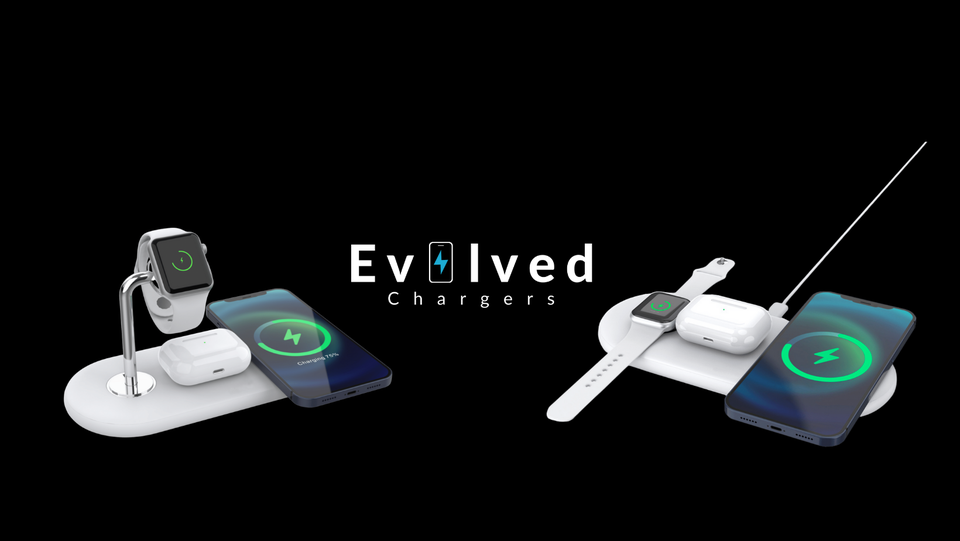In the realm of technology, where devices are becoming increasingly indispensable in our daily lives, the importance of efficient charging solutions cannot be overstated. From smartphones to laptops, tablets to electric vehicles, the need for reliable and rapid charging is paramount. However, the evolution of evolved chargers has not merely been about increasing speed; it’s a story of innovation, adaptation, and efficiency. In this article, we delve into the fascinating journey of charger evolution, exploring the milestones, breakthroughs, and future prospects in the realm of power delivery.
The Early Days
Introduction of Basic Chargers
The journey of chargers traces back to the early days of electronic devices. Basic chargers were designed to deliver power to recharge batteries, primarily for portable radios, early mobile phones, and handheld gaming devices. These evolved chargers were rudimentary, often employing linear charging methods that were slow and inefficient.
The Birth of USB Standard
The introduction of the Universal Serial Bus (USB) standard marked a significant milestone in charger evolution. USB ports became ubiquitous on computers and other electronic devices, leading to the emergence of USB chargers. Initially offering modest power outputs, these chargers were primarily used for low-energy devices like keyboards and mice.
Rise of the Smartphone Era
Smartphone Revolution
The advent of smartphones brought about a seismic shift in charger technology. With the rise of feature-rich devices demanding more power, there arose a need for faster charging solutions. Manufacturers began to innovate, developing chargers capable of delivering higher currents to meet the demands of power-hungry smartphones.
Introduction of Fast Charging Standards
To address the need for speed, various fast charging standards emerged. Qualcomm’s Quick Charge, MediaTek’s Pump Express, and USB Power Delivery (USB PD) were among the pioneering technologies in this space. These standards allowed for significantly faster charging times, enabling users to replenish their device batteries in a fraction of the time compared to traditional chargers.
Pushing the Limits
Turbocharging and Dash Charging
As smartphones continued to evolve, so did charging technologies. Turbocharging, pioneered by Motorola, and Dash Charging, introduced by OnePlus, pushed the boundaries of fast charging even further. These technologies employed innovative charging algorithms and higher power outputs to deliver rapid charging speeds without compromising device safety.
The Advent of SuperVOOC and Warp Charge
The pursuit of faster charging led to the introduction of SuperVOOC by OPPO and Warp Charge by OnePlus. These proprietary technologies boasted staggering charging speeds, leveraging advanced hardware and software optimizations. With SuperVOOC and Warp Charge, users could replenish their device batteries from zero to full in a matter of minutes, revolutionizing the charging experience.
Beyond Smartphones
Expansion to Other Devices
The evolution of chargers did not stop at smartphones. With the proliferation of other electronic devices such as laptops, tablets, and wearables, the demand for versatile charging solutions grew. Manufacturers began to develop chargers capable of powering a diverse range of devices, often incorporating multiple output ports and adaptive charging technologies.
USB Power Delivery (USB PD) Standard
USB PD emerged as a universal charging standard capable of delivering higher power outputs across a wide range of devices. Unlike proprietary fast charging technologies, USB PD offers interoperability and compatibility across various brands and device types. With USB PD, users can enjoy fast and efficient charging without being tied down to specific hardware ecosystems.
Toward a Greener Future
Focus on Energy Efficiency
As concerns over energy consumption and environmental impact grew, there emerged a concerted effort to improve the efficiency of charging technologies. Manufacturers began to prioritize energy efficiency in evolved chargers design, reducing power losses and optimizing charging algorithms to minimize waste.
Integration of Renewable Energy Sources
The integration of renewable energy sources into charging solutions marked a significant step toward sustainability. Solar chargers, kinetic chargers, and other innovative technologies harness renewable energy to power electronic devices, reducing reliance on conventional power grids and fossil fuels.
The Road Ahead
Wireless Charging Advancements
Wireless charging has gained traction in recent years, offering the convenience of cable-free power delivery. Advances in wireless charging technology, such as higher charging efficiency and extended range, are paving the way for broader adoption across various devices and industries.
Ultra-Fast Charging Technologies
The quest for faster charging speeds continues unabated, with researchers and engineers exploring new frontiers in power delivery. Ultra-fast charging technologies, such as graphene-based batteries and solid-state electrolytes, hold the promise of even shorter charging times and enhanced energy density, ushering in a new era of rapid power delivery.
Integration of Smart Grids and Energy Management Systems
The integration of smart grids and energy management systems into charging infrastructure promises to optimize energy distribution and consumption. By leveraging real-time data and intelligent algorithms, these systems can dynamically adjust charging parameters based on demand, grid capacity, and renewable energy availability, maximizing efficiency and sustainability.
Conclusion
The evolution of evolved chargers is a testament to human ingenuity and technological progress. From humble beginnings to ultra-fast charging solutions, the journey has been marked by innovation, adaptation, and a relentless pursuit of efficiency. As we look to the future, the possibilities are limitless, with advancements in charging technology poised to reshape the way we power our electronic devices and navigate the transition to a sustainable energy future.







